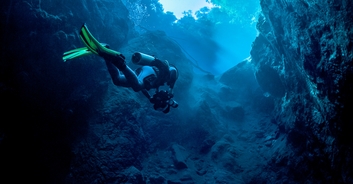In a groundbreaking archeological discovery, a human-sized penguin fossil has been discovered in New Zealand.
The discovery, on New Zealand's South Island, was announced earlier today by scientists. They revealed that the adult penguin came in at 1.6 meters (5ft 2") high and weighed 80 kilograms (176 lbs). This is four times heavier and 40 cm taller than the Emperor Penguin, the BBC has reported.
The giant penguin was a species known as "crossvallia waiparensis", which, 66-56 million years ago, lived on the coast of New Zealand.

While the discovery was announced today, it was made last year by an amateur archeologist, who found the bird's bones. After careful examination, scientists concluded that they belonged to a new species in a study published in Alcheringa: An Australasian Journal of Palaeontology this week.
However, this is not the first time that a giant penguin has been discovered, Canterbury Museum researcher Vanesa De Pietri revealed.
"It further reinforces our theory that penguins attained great size early in their evolution," she said.
Think penguins are cute? Think again! This gang of penguins was taken into custody after causing trouble in a Wellington sushi store:When these giant penguins existed, some of the largest marine mammals known today like toothed whales and seals did not, and scientists have hypothesized that when they came into being, the giant penguins died out as a result.
In an interview with the BBC, Gerald Mayr said: "At the time giant penguins evolved, the large marine reptiles just had become extinct."
"In Antarctica and New Zealand, there were no large marine competitors until the arrival of toothed whales and pinnipeds (seals) many million years later."
The new species has now been dubbed the "Monster Penguin" by Canterbury Museum.
Museum curator Paul Scofield told the BBC that the penguin was native to the waters of the Southern hemisphere and "is one of the largest penguin species ever found."
He continued: "We think that at the time, animals were evolving very rapidly. Water temperatures around New Zealand were ideal back then, around 25C (77F) compared to the 8C we have now."

.jpg_WeggMr?tr=h-184)
